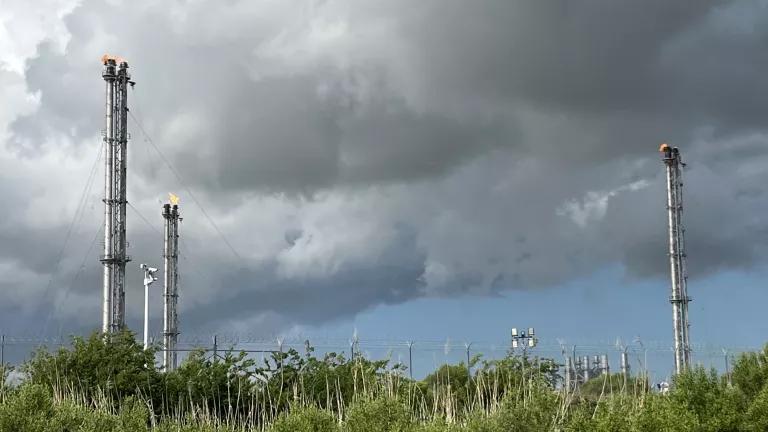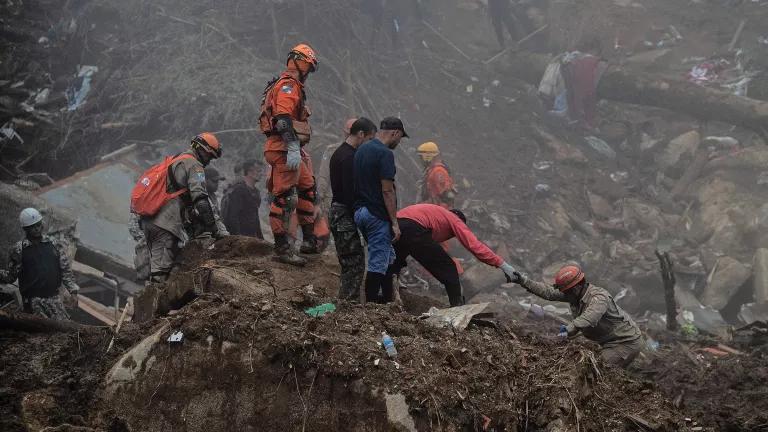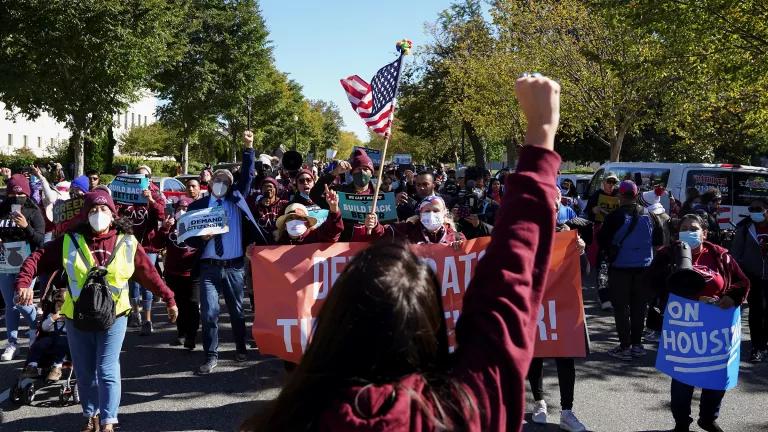A Summer of No Sanctuary
Climate change has some paying a price they can't afford, for a crisis they didn’t cause.
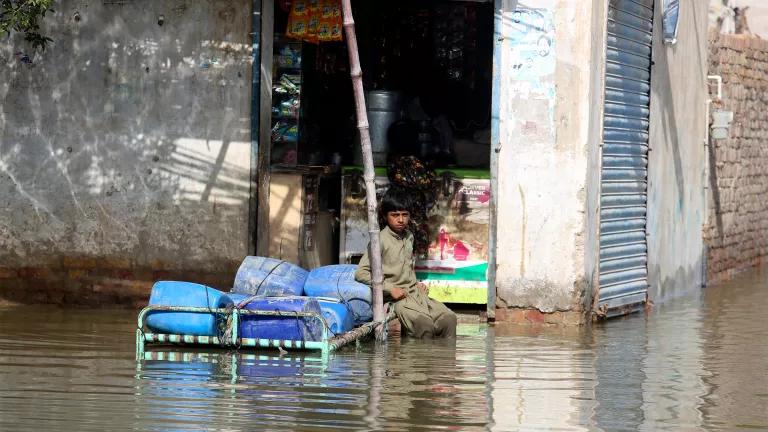
A child on the flooded streets of Jaffarabad, Pakistan, after unprecedented monsoon rains struck the country
Fareed Khan/AP Photo
The Yangtze River, the cradle of Chinese civilization and the breadbasket to a fifth of the world’s people, has slowed to a trickle in places amid China’s worst drought in six decades.
In Pakistan, more than 1,500 people are dead from floods that left millions homeless, washed out half the nation’s crops, and put a third of the country underwater.
A dearth of rain has driven 22 million people to the brink of famine across the Horn of Africa, while more than 1,000 people had to be rescued after Hurricane Fiona knocked out power and left two-thirds of Puerto Rico without running water.
The American West is baking through its worst drought in 1,200 years. The nation’s two largest reservoirs are three-quarters empty. And wildfires have torched enough land this year alone to cover the state of Vermont.
A summer of no sanctuary from climate disaster, at home or abroad, is fading into fall. The climate crisis, though, is getting worse, warns a new scientific report led by the United Nations’ World Meteorological Organization.
“Floods, droughts, heat waves, extreme storms, and wildfires are going from bad to worse with alarming frequency,” said U.N. Secretary-General António Guterres. “There is nothing natural about the scale of these disasters. They are the price of humanity’s fossil fuel addiction.”
When he convenes world leaders this week for the annual U.N. General Assembly in New York City, Guterres will call for global action to address this widening scourge with the urgency it demands. It’s a moment for President Biden to lead.
What’s driving the climate crisis, of course, is the carbon pollution that comes from burning coal, oil, and gas. The United States has generated more of it—25 percent of the cumulative global total—than any other nation.
Biden’s address to the U.N. General Assembly on Wednesday will be a chance to commit to greater climate ambition, while communicating what the United States has done to fulfill existing commitments.
Ahead of U.N. climate talks in Scotland last fall, Biden pledged to cut U.S. carbon pollution and other greenhouse gases by 50 to 52 percent, below 2005 levels, by 2030. Now he’s secured from Congress the passage of the Inflation Reduction Act, the strongest climate action in U.S. history—$369 billion, over 10 years—to help meet that goal.
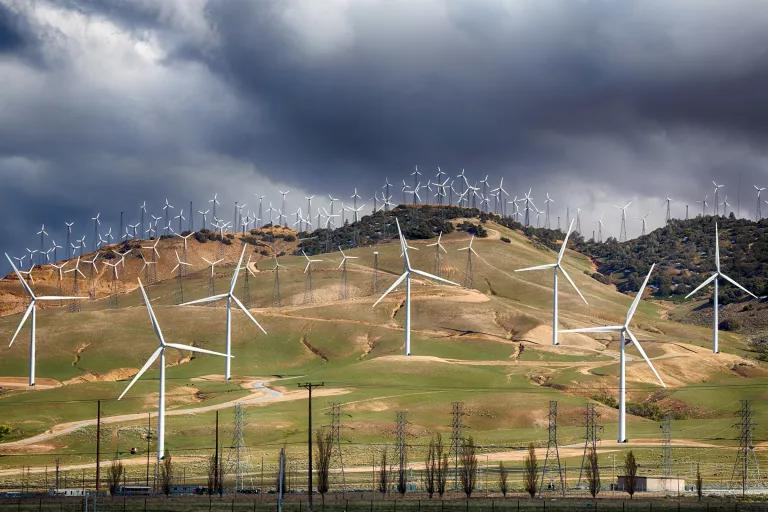
A wind farm in Bakersfield, California
This is strategic investment to help utilities procure more clean electricity from the wind and sun; to make electric cars, new and used, more affordable for medium-income and low-income drivers; to cut the cost of installing rooftop solar panels, heat pumps, and high-efficiency appliances in homes; and to shrink the carbon footprint of heavy industry.
It’s going to reduce annual electric bills by an estimated $500 per household, on average. It will drive innovation, strengthen the economy, and create hundreds of thousands of clean energy jobs. It will help break U.S. dependence on fossil fuels. And it will position the country to cut greenhouse gas emissions by 40 percent by 2030.
To help get the rest of the way toward his target, Biden must use his authority under existing law to write new standards and rules to clean up our cars, trucks, power plants, and industrial facilities; improve the efficiency of appliances and buildings; reduce methane leaks from oil and gas operations; and keep investors apprised of corporate climate risk.
This federal action, along with continuing state and local progress, can set the country on track for the 50 to52 percent emissions cuts that Biden pledged.
The United States is lagging, however, in promised aid for people in developing countries, which are paying a price they can’t afford for a climate crisis they didn’t cause.
The United States, European Union (E.U.), China, and Russia are, together, responsible for 63 percent of the carbon pollution that’s accumulated in the atmosphere over time. Pakistan and nine other of the most climate-vulnerable nations account for roughly 1 percent.
The United States and other countries promised in 2009 to mobilize $100 billion a year in aid to help developing countries cope with the climate crisis. Funding was still coming up about $17 billion short in 2020.
Strikingly, the United States provided less than a quarter of the $25 billion that E.U. member states contributed that year. To address the shortfall, Biden has asked Congress for $11 billion in global climate assistance for the budget year that begins October 1, 2022. Congress should approve it without delay.
That would send another powerful message—in advance of global climate talks in Egypt this November—that the United States is stepping up and doing its part to confront the existential crisis of our time.

